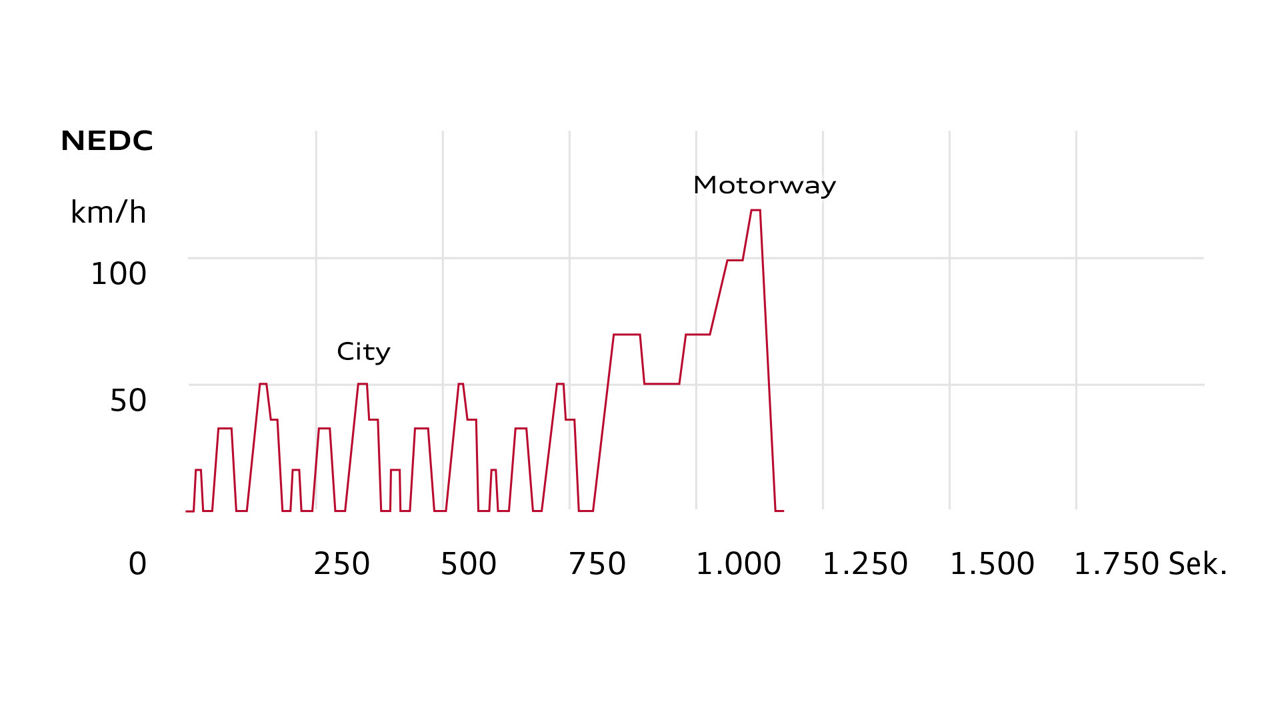Closer to real consumption: WLTP replacing New European Driving Cycle (NEDC)
NEDC vs. WLTP

NEDC
NEDC

WLTP
WLTP
- The temperature in the test chamber was 20-30°C
- The distance was about 11 km.
- The cycle lasted about 20 minutes.
- The cycle consisted of two phases:
- approx. 13 minutes of simulated city driving
- approx. 7 minutes of simulated cross-country driving
- The average speed is about 33 km/h.
- The vehicle was not moving 25% of the time.
- The highest speed tested was 120 km/h.
- The points where gears were shifted on models with manual transmission were precisely specified.
- Special equipment and air conditioning were not taken into account.
- The temperature in the test chamber is 23°C
- The distance is about 23 km.
- The cycle lasts about 30 minutes.
- It consists of four phases (low, medium, high, extra-high).
- The average speed is about 47 km/h.
- The vehicle was not moving 13% of the time.
- The highest speed tested was over 130 km/h.
- The gear shift points are calculated individually for each vehicle in advance.
- Vehicle weight and additional equipment are included in the evaluation.




